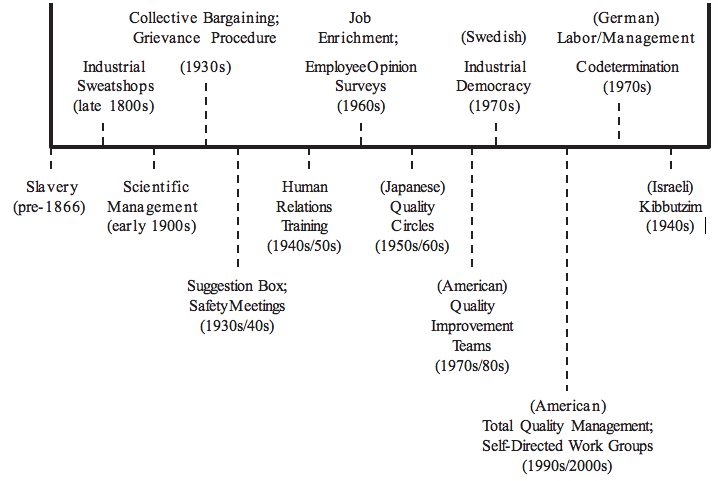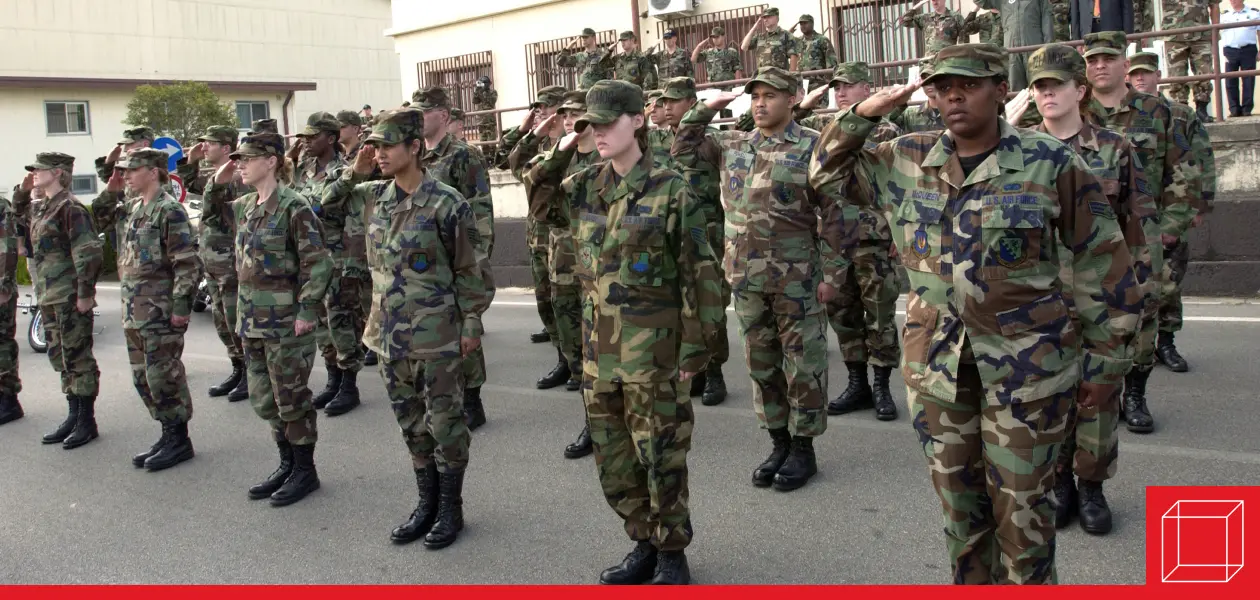The Power of Participation
The process begins by involving people, which is necessary to achieve understanding and commitment.

How do you tap the constructive power of people? How do you create both a humanistic and productive workplace? The answer is through participative leadership. The process begins with involving people, which is necessary to achieve understanding, which is necessary to achieve commitment. It is important to know the views and consider the interests of all who are affected when decisions are made.
To develop an empowered workplace that leads to high-quality products and services, leaders must adopt the kind of leadership philosophy promoted by the Japanese Union of Scientists and Engineers:
No matter how much factories are mechanized, as long as there are people still working there, they should be treated as human individuals. Those companies that do not give due consideration to humanity will lose their best people sooner or later. There can be no excuse for disregarding individual personality, slighting a person’s ability, regarding people as machinery, and discriminating against them. People spend much of their lifetime at their working place. It would be much more desirable to work in a pleasant place where humanity is paid due respect and where people feel their work has some real meaning. That is what quality practices aim to achieve. A mechanized factory still requires control by a workshop of people.1
A concrete example of participative leadership is Jack Stack, the CEO from Springfield, Missouri, who popularized open-book management in the 1980s. Open-book management involves sharing financial information with employees and encouraging them to recommend ideas that improve those financial results. Company-wide bonuses are provided depending on improving business performance.2
An Open-Book Example
Employees at Artists Frame Service in Chicago knew what the company charged customers and knew their pay was only a fraction of that. The CEO wanted them to understand that the difference between invoice prices and their salaries wasn’t all profit. So the employees were given a demonstration of the company’s expenses, illustrated as portions of a hypothetical $100 order.
As the CEO explained where the money was going, different departments came forward to claim the proceeds of the sale. A $5 bill, for example, was disbursed to cover the cost of advertising. The pile of cash was whittled down as claims were made by rent, health insurance, and other fixed and operating expenses that many employees didn’t think about. When all the bills were paid, $5 remained.
The demonstration improved morale by giving workers an understanding of the company’s expenses and challenging them to look for ways to save the company money. When they understood how lean a company has to run to stay competitive, buyers began ordering in bulk and watching inventory carefully, and clerks began finding ways to handle orders more efficiently.3
In a Slate article titled “We spent what on paper clips?” Seth Stevenson cites a story about a hotel manager mentored by Jack Stack. The hotel was averaging a 67 percent occupancy rate and was losing money. The manager began sharing the occupancy number with all the employees – front desk, housekeeping, maintenance, food and beverage, accounting, and sales – every day. He offered a bonus to every employee when the occupancy rate went above 72 percent. The transformation was dramatic: Employees were energized to work together and improve occupancy so that they would all make more money. The daily number felt like a scoreboard. At the end of 18 months, the average occupancy rate was 85 percent.4
Participative Leadership Values
Management authors Warren Bennis and Phillip Slater identify participative leadership as necessary if organizations are to survive under conditions of strong competition and chronic change. They define participative leadership as democratic, not as permissive, or laissez-faire, management. This type of management involves a system of beliefs and common values that govern behavior:
Full and free communication, regardless of rank and power.
A reliance on consensus, rather than on traditional forms of coercion and compromise, to manage conflict.
The idea that influence is based on technical competence and knowledge, rather than on the vagaries of personal whim or the prerogatives of power.
An atmosphere that permits and even encourages emotional expression as well as task-oriented acts.
A basically human bias, one that accepts the inevitability of conflict between the organization and the individual but that is willing to cope with and mediate this conflict on rational grounds.5
Continuum of Participation
Examples of work systems and techniques for employee participation in the United States and abroad can be arranged along a continuum, as shown in the Figure below. On the left part of this continuum, employees possess less power and are less involved in the decision-making process. For example, workers in industrial sweatshop systems exert less control over their work lives than do employees in industrial democracy systems.
This Figure explains much of the popularity and success of total quality management and other employee involvement efforts. It shows quality improvement groups to the right of middle – satisfying needs for employee involvement, yet not so participative that owners and managers fear loss of power and ownership.6
Figure: Continuum of Participation

Employee participation has been used effectively by many leaders to build employee morale and achieve high performance. With roots in democratic ideals, participative leadership allows the leader to tap the constructive power of the group. In Productive Workplaces, Marvin Weisbord writes:
The democratic process is the best procedure yet devised for promoting decision-making that is part of all social living, and at the same time, safeguarding to each individual the conditions necessary for self-realization. The democratic process allows each individual to participate in making decisions that determine his or her conditions of life.7
In a leadership interview with Army Lieutenant General (Ret.) Walter Ulmer he states: you cannot sustain organizational productivity without a "humanistic" environment. One component essential to any kind of empowerment is mutual trust. Trust is created through a combination of supportive institutional policies and leader behaviors such as competence in decision-making, candor in communications, and powerful listening skills at the center. Also, an organization's systems for rewarding individual and group performance must be in line with empowerment in order to sustain productivity. You can't preach teamwork and then give bonuses only to individual contributors!8
Activities
Describe a participative organization where leaders involve the people, gain understanding, and achieve good results. What do leaders do? How do people react?
Use participative leadership to improve performance. Assemble a team, discuss problems and opportunities, select one, develop recommendations, follow up and evaluate results.
For related reading, see:
The Toyota Way by Jeffrey Liker
The Checklist Manifesto by Atul Gawande
Hardwiring Excellence by Quint Studer
Productive Workplaces by Marvin Weisbord
Turn The Ship Around! By David Marquet
1. M. Imai, Kaizen (Kyizen) (New York: Random House, 1986); and M. Imai, Gemba Kaizen (New York: McGraw-Hill, 2012).
2. J. Case, Open-Book Management (New York: Harper Business, 1996).
3. T. Barton et al., Open-Book Management (Morristown, NJ: Financial Executives Research Foundation, 1998). Adapted from Donna Renn, “Open-Book Management 101, Inc. (2007).
4. S. Stevenson, “We Spent What on Paper Clips?” Slate (May 19, 2014), https://slate.com/business/2014/05/open-book-management-the-philosophy-that-lets-every-employee-look-at-the-accounts.html
5. P. Slater and W. Bennis, “Democracy Is Inevitable,” Harvard Business Review (March-April 1964), pp.51-53.
6. W. Lindsay et al., A Participative Management Primer, Journal for Quality and Participation (June 1989), pp.78-84; and J. Mathieu et al., “Team Effectiveness,” Journal of Management 34 (2008), pp.410-476.
7. M. Weisbord, Productive Workplaces, 3rd ed. (New York: Pfeiffer, 2012).
8. Unpublished interview with Walter Ulmer, U.S. Army Lieutenant General (Ret.), May 3, 2022.




